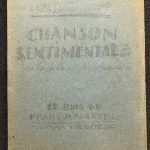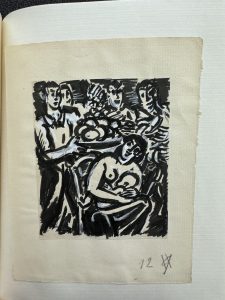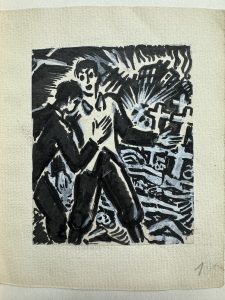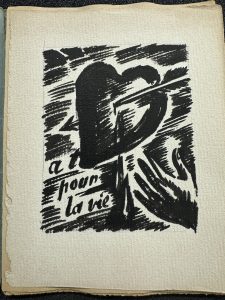 There are certain artists of visual narrative who’ve been grandfathered into the canon of comics pioneers; Rodolphe Töpffer, for example, the Swiss artist whose slim 1828 volume L’histoire de M. Vieux Bois is often regarded as one of the earliest attempts at a graphic novel, garnering English language editions–as The adventures of Obadiah Oldbuck— in 1841 (London) and 1842 (New York).
There are certain artists of visual narrative who’ve been grandfathered into the canon of comics pioneers; Rodolphe Töpffer, for example, the Swiss artist whose slim 1828 volume L’histoire de M. Vieux Bois is often regarded as one of the earliest attempts at a graphic novel, garnering English language editions–as The adventures of Obadiah Oldbuck— in 1841 (London) and 1842 (New York).
Another such is the Belgian artist, Frans Masereel. His wordless woodcut novels, debuting in the wake of World War I with Mon livre d’heures, and nearly all addressing issues of social injustice, would not have been seen as comics at the time, which were mostly considered a low-culture medium. But as comics have become more sophisticated, Masereel has met with greater regard. His work influenced German artist Otto Nückel, American artist Lynd Ward (for whom Penn State University’s Center for the Book named their prize for best graphic novel), even modern cartoonists such as art spiegelman, Peter Kuper, and Eric Drooker.
Masereel was incredibly prolific so perhaps it shouldn’t be entirely surprising that some of his work never made it to print. Nevertheless, it is with great excitement that we can announce the acquisition of two unpublished Masereel manuscripts.
 Held by the Masereel estate until 1991, then in a private collection, the brief manuscripts are titled Chanson sentimentale (10 leaves, 1931) and Demain les Jeunes (12
Held by the Masereel estate until 1991, then in a private collection, the brief manuscripts are titled Chanson sentimentale (10 leaves, 1931) and Demain les Jeunes (12 leaves, 1947-1948). Chanson sentimentale is 10 loose, unnumbered leaves, held in a pale-blue wrapper; the effect is that of a modern minicomic. Each image has been painted in black ink on heavy paper, using cut-up squares of one or two existing drawings, with the initials FM on more than one fragment. The story seems to be that of lovers: sweet and without the serious social aspects of his earlier work. Perhaps the post-WW1 stresses had subsided and the pre-WW2 stresses had not yet imposed themselves.
leaves, 1947-1948). Chanson sentimentale is 10 loose, unnumbered leaves, held in a pale-blue wrapper; the effect is that of a modern minicomic. Each image has been painted in black ink on heavy paper, using cut-up squares of one or two existing drawings, with the initials FM on more than one fragment. The story seems to be that of lovers: sweet and without the serious social aspects of his earlier work. Perhaps the post-WW1 stresses had subsided and the pre-WW2 stresses had not yet imposed themselves.
Demain les Jeunes begins on a much darker note, then ends on a hopeful note, more appropriate perhaps to the post-war period. It opens in a cemetery with cadavers, and closes with a smiling mother breastfeeding her baby–one of les jeunes. It does not have the minicomic aspect of Chanson sentimentale; someone has affixed each leaf onto the pages of the small sketchbook in the slipcase (Chanson sentimentale has merely been tucked between the pages of the blank sketchbook). It is impossible to say if it was also painted on recycled paper, but it has the same heavily inked brushwork, in this case with overlays of white gouache in places.
Given that Masereel was best known for woodcut novels, this glimpse into his painted work is fascinating. These manuscripts should inspire research into Masereel’s techniques as well as into how the stories fit into his larger oeuvre.
With profound thanks to Courtney Chartier, Director of the Rare Book & Manuscript Library, and Jane Siegel, Curator for Rare Books, without whose assistance this acquisition would have been impossible, we invite you to come see these two extraordinary artifacts.


